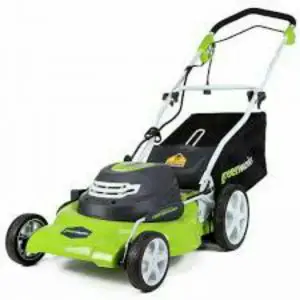Table of Contents
Introduction
Ever taken a look at well-maintained lawns? Breathtaking right? Thus when you think about taking care of your fields, most of the time, lawnmower comes to mind, and this is because lawnmowers are durable, reliable, efficient, produce fantastic results. Best of all, they are super easy to use.
However, sometimes these lawn improvement companions won’t start; however, before hitting your panic button, you should consider running some diagnostic check. You’d be surprised o see that it’s a small problem that can be solved. Learn more on how to fix an electric lawn mower here
Nevertheless, below are steps to fixing an electric lawn mower that has refused to start:
Reason Why Your Electric Lawn Mower Might Not Be Working
- Power supply
- Bad cord
- Bad fuse
- Loose connection
- Clogged Vents
- Motor failure
- Capacity full cutting bag
- Child Safety
Steps to fixing an electric lawn mower
- Step One: Do ensure that the power supply is connected. Long power cords can easily be pulled out of the socket when driving the lawnmower across the lawn. Change to another socket or extension cord to try to restore electricity to the lawnmower. Most extension cables may be reset using a button or switch on the edge of the reel.
- Step Two: Replace or reset any fuse in your home that might be faulty. It is possible for your electrical outlets not to work if your lawnmower has tripped a breaker o a fuse that is blown. You should test the outlet by plugging in a lamp or any other small appliance. If the lamp does not work, then you should know that your fuse or breakers require a bit of repair.
- Step Three: Disconnect and clean your lawnmower cutting bag. The lawnmower cannot function properly if the bag is identified as full by the lawnmower machine. Cut grasses are gathered in the cutting bag at the back of the mower as you drive across your lawn. When in use, you may notice the mower cuts out as the bag exceeds the maximum.
- Step Four: kindly ensure that the safety of your lawnmowers mechanism isn’t preventing the motor from starting. Most of the electric lawn mowers come with a safety feature that prevents kids from starting the motor. Typically a special button or lever has to be pushed down while the “start” button is pressed.
- Step Five: Finally, you should disconnect your mower machine from its power source, so you can turn it over to check the blades. Do your due diligence to check for any debris such as grass, sticks, or leaves aren’t preventing the blades from spinning correctly because electric lawn mowers will not function if the blades aren’t spinning as it should.
Safety Tips To Observe When Running a Diagnostic Check On Your Electric Lawn Mower
- Be sure to check the batteries are removed before running any check
- Always wear safety gloves to prevent shock
- Pay attention to the corded mowers, and ensure the cords are unplugged while running your test
- Not until everything is plugged back in before you power the mower
- If you are a novice in electrical, do not attempt to do this yourself. Instead, seek the expertise of a lawnmower electrician
Five Electric Lawn Mower Maintenance Best Practices
- Read the manual for usage. It’s not everything you do base on assumption
- At the end of each mowing session, drain the gasoline
- Every day, before and after use, check the oil level
- After every episode of use, clean the undercarriage; this prevents unnecessary clogging
- Make a habit of sharpening the blade of your lawnmower.
- Once a month, you should take your electric lawn mower to a professional for servicing. If your sparks plug, the air filter is bad, then you should consider getting them replaced there.
- For optimum performance, check and replace tires that are worn out
Conclusion
Lawnmowers are responsible for the beautiful transformation of home for several years. Thus. To ensure that they are around for a very long time, all you have to do is observe the best maintenance practices. And one tip is always to let you know whenever a fault arises.

